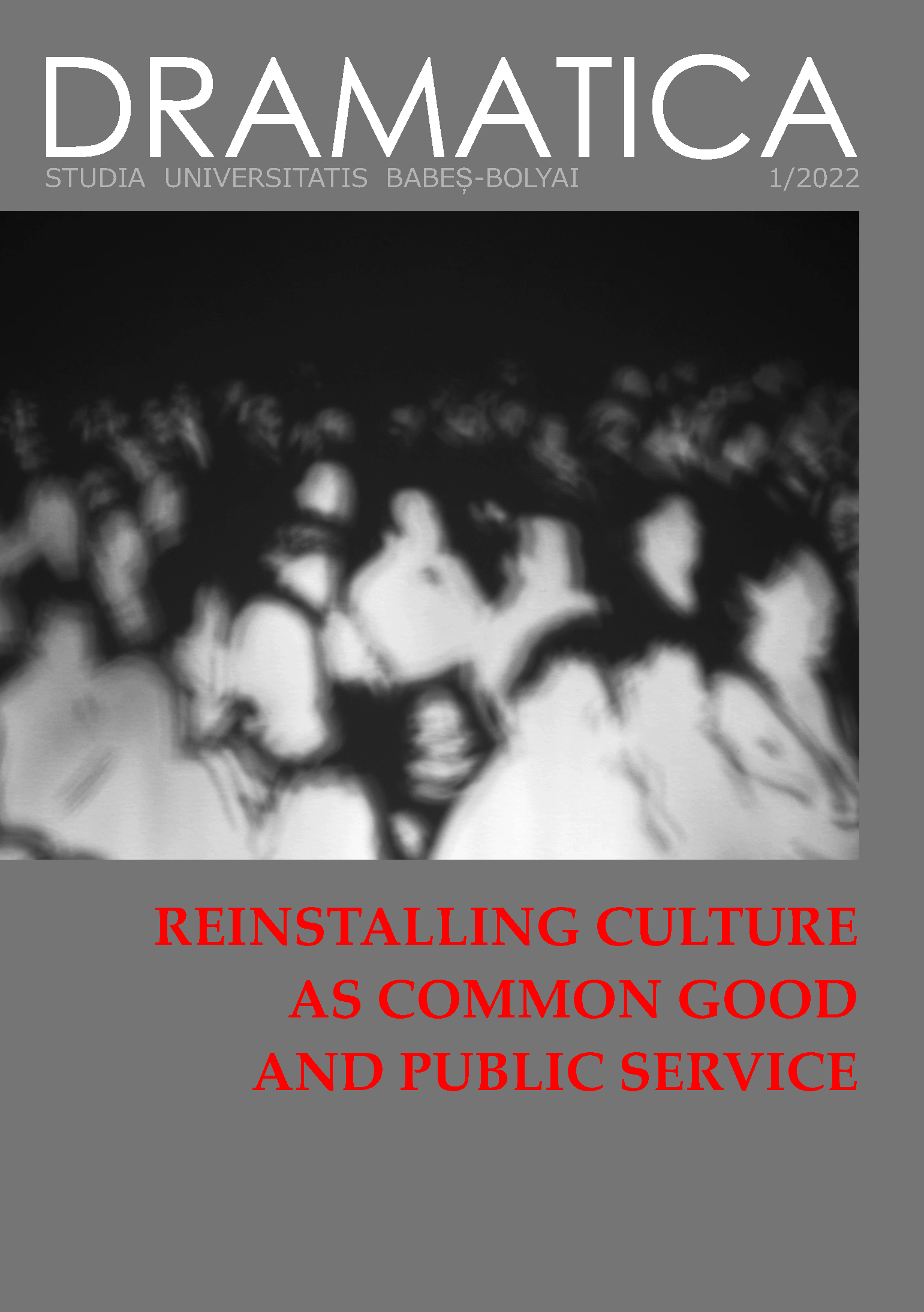Dialogue Table. A Hybrid Method of ActiveArt and Citizenship
DOI:
https://doi.org/10.24193/subbdrama.2022.1.04Keywords:
communitarian, ActiveArt, co-authorship, Dialogue Table, action research, radical pedagogy, participatory democracy.Abstract
In the absence of a methodology or of an inherited practice, be it directly – from the local artistic environment, or indirectly – through written sources and scholarly literature (Artificial Hells by Claire Bishop was released around 2012) – the experience and practice of social art were the result of the encounter of a more or less fragmentary familiarity with art history and lived experience, at the beginning of 2006 within the Rahova-Uranus community art project. The attitude which had not yet become common currency in the local cultural context of those years was one opposed to the art institution(s), which occupied a too markedly elitist and exclusive zone and were insulated from society. It was our desire to identify the various vulnerable social categories which were subjected to a policy of exclusion, rather than to one based on communication, that would bring communities in dialogue. We had to create our own method of working together, the community, the artists and the local authority, in a space of learning from each other skills and experiences which will inform a local practice for a cultural public policy and its servants. The theoretical landmarks originating in the history of art were, alongside direct experience, points of reference and support which could suggest a new practice of embracing cultural competency, professional training and development in public service for the common good focused on this paradox of mediation at the centre of modern political life.
References
Bălășescu, A., “Learning from a Flower Market in Romania: Community, Social Fabric and the Promise of Economic Prosperity.” Development 53 (2010): 410-415.
Beuys, Joseph. “I Am Searching for Field Character” (1977). In Carin Kuoni, Joseph Beuys In America. Writings by and Interviews with the Artist. New York: Four Walls Eight Windows, 1993.
Bishop, Claire. Artificial Hells. Participatory Art and Politics of Spectatorship. London and New York: Verso, 2012.
Bohm, David. On Dialogue. London and New York: Routledge, 2003.
----------------. On Creativity. London and New York: Routledge, 1998.
Drăghici, Maria (ed.). Iniţiativa Ofensiva Generozităţii 2006-2008 [The Generosity Offensive Initiative 2006-2008]. Bucharest: Vellant, 2009.
----------------. Reader Rahova-Uranus. LUM DOC.2009. Bucharest: Vellant, 2010.
Groys, Boris and Iliya Kabakov. “A Universal System for Depicting Everything: a Dialogue between Ilya Kabakov and Boris Groys.” Artmargins online, 26th August 2000.
Madoff, Steven Henry. Art School (Propositions for the 21st Century). Cambridge: The MIT Press, 2009.
Maharaj, Sarat. “Know-how and No-How.” Art & Research, vol. 2, no. 2 (2009).
Marquez, Xavier. “Spaces of Appearance and Spaces of Surveillance.” Polity 44 (2012): 6-31, doi:10.1057/pol.2011.20, published online 19 December 2011.
Nadin, Mihai. “Reporting on anticipatory systems: a subject surviving opportunism and intolerance.” International Journal of General Systems, 2017.
Rappmann, Rainer. “Organismul social ca operă de artă.” In Volker Harlan, Rainer Rappman, Peter Schata, Plastica Socială. Materiale despre Joseph Beuys. Cluj: IDEA Design & Print, 2002.
Spinoza, Baruch. “Of Miracles”, Tractatus Theologico-Politicus, Chapter VI, The Gutenberg Project, trad. R. H. M. Elwes, 1997.
Staal, Jonas. “Assemblism.” e-flux Journal #80, March 2017.
Online Sources
Drăghici, Maria. ActiveArt Gothenburg: https://komettorgetodlingslotter.wordpress.com/author/komettorget/
Drăghici, Maria. ActiveArt Bucharest: http://labombastudios.blogspot.com/
Badiou, Alain. From Logic to Anthropology, or Affirmative Dialectics. European Graduate School Video Lectures, 2012:
https://www.youtube.com/watch?v=wczfhXVYbxg
Zinn, Howard, Radical History (Conversation with History), Harry Kreisler, U.C. Berkeley, 2001: https://uctv.tv/shows/Radical-History-with-Howard-Zinn-Conversations-with-History-8400
Khan-Cullors, Patrisse and Asia Kate Dillon, Document, issue no. 12, http://www.documentjournal.com/2018/05/black-lives-matters-patrisse-khan-cullors-and-actor-asia-kate-dillon-on-the-art-of-creative-survival (accessed in May 2018).
Downloads
Published
How to Cite
Issue
Section
License
Copyright (c) 2022 Studia Universitatis Babeș-Bolyai Dramatica

This work is licensed under a Creative Commons Attribution-NonCommercial-NoDerivatives 4.0 International License.


